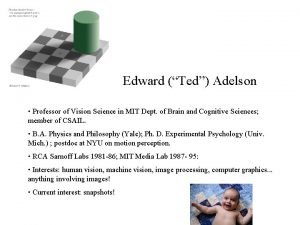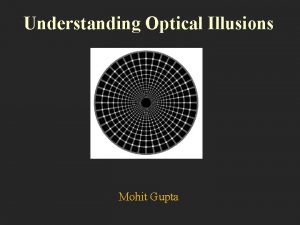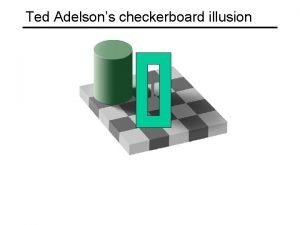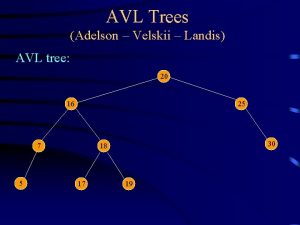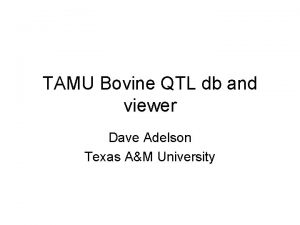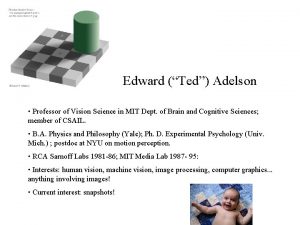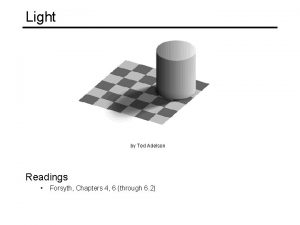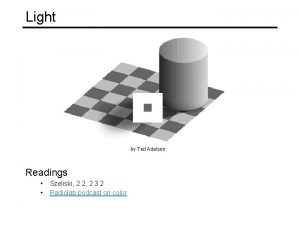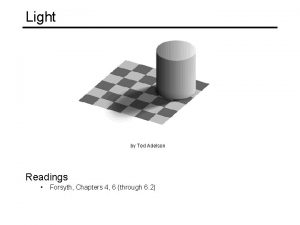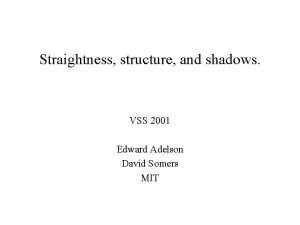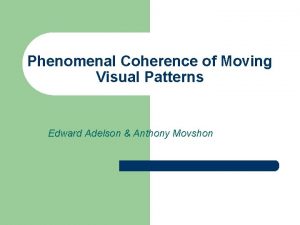Edward Ted Adelson Professor of Vision Science in










- Slides: 10

Edward (“Ted”) Adelson • Professor of Vision Science in MIT Dept. of Brain and Cognitive Sciences; member of CSAIL. • B. A. Physics and Philosophy (Yale); Ph. D. Experimental Psychology (Univ. Mich. ) ; postdoc at NYU on motion perception. • RCA Sarnoff Labs 1981 -86; MIT Media Lab 1987 - 95: • Interests: human vision, machine vision, image processing, computer graphics. . . anything involving images! • Current interest: snapshots!

Where am I coming from? Gaussian/Laplacian Pyramid (with Burt; 1981, 1983) Multiscale image coding, denoising, merging, inpainting (with Burt and others, 1980’s). Steerable Filters (with Freeman 1991)

Plenoptic function (with Bergen 1991) Layered motion analysis (with Wang, 1992) Plenoptic Camera (with Wang, 1994)

Imaging: gather evidence, then render image. • Traditional photography: Gathering evidence: light hits film in camera. Rendering: develop & print. • Examples with less direct route: tomography, coded aperture imaging, range sensing. • But even for snapshots we can gather evidence across space and time.

Using evidence gathered over time. Original image of Sarah. Cute face, but bad lighting. Do we have prior evidence of what she looks like under different lighting? Dig through dozens of photos. . . From a video From cell phone pic. Extract low freqs, add to luminance component. Improved lighting



My camera should learn about my friends and family. Instead of solving general problem of analyzing and rendering faces, just learn a lot about Sarah’s face. Even without fancy models: just use lots of 2 -D examples of different lighting, pose, expression. My camera has much experience looking at my friends and family. It should use it to infer better pictures.

Gathering evidence across space: plenoptic/lightfield imaging. • Snapshots again: how to get multiple views of a wedding or birthday party? • Fill room with cameras, all communicating wirelessly. • But how?

Name tag cams? Balloon cams? Somehow. . . get lots of cameras out there. Then use IBR to move viewpoint around, get good shots. Party hats cams?
